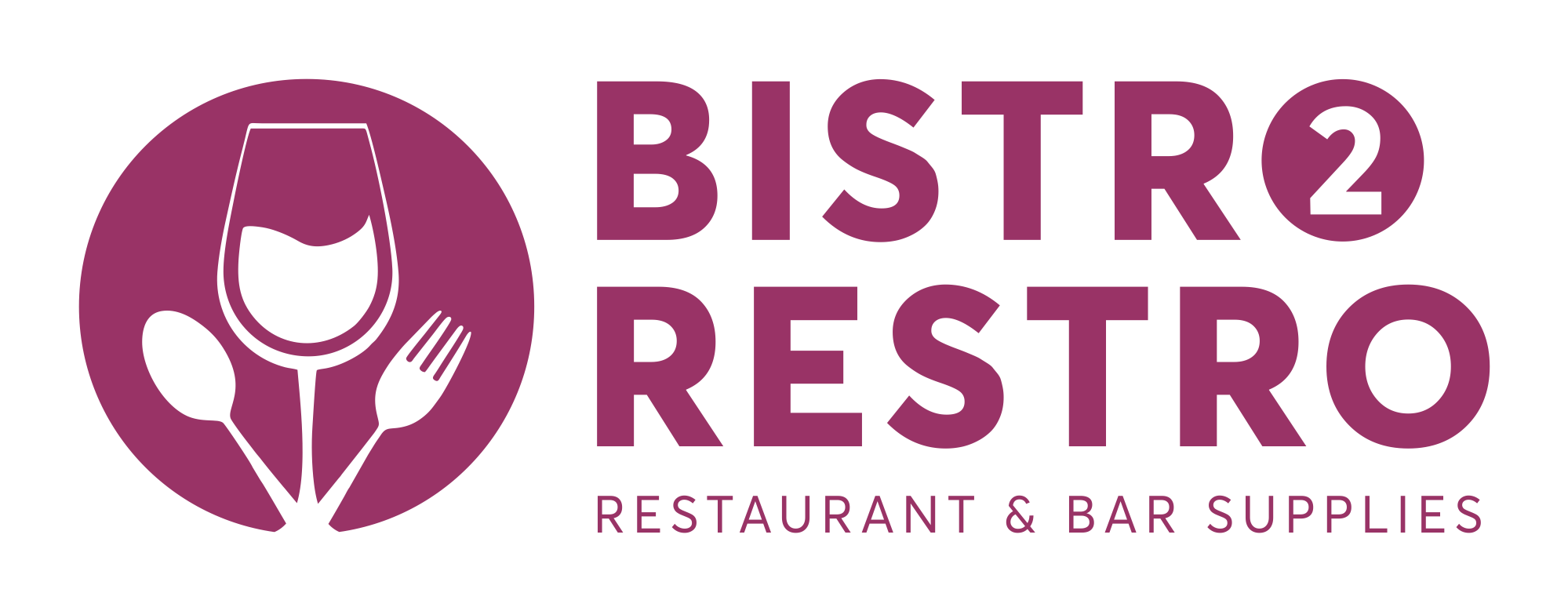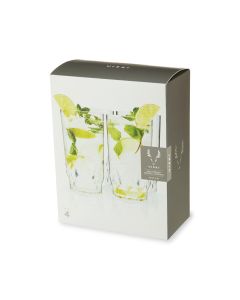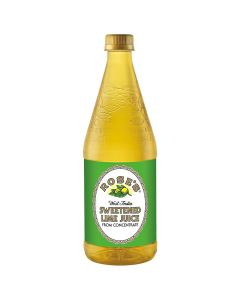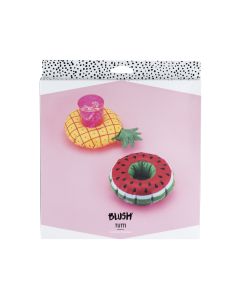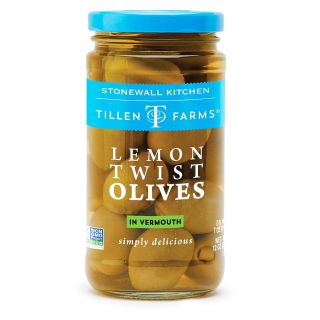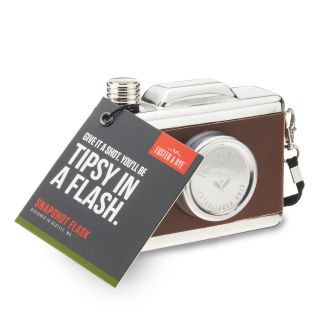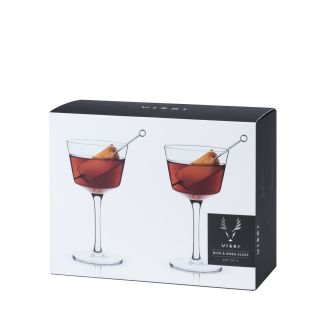In today’s competitive hospitality industry, it's not just about serving great drinks; it's about offering an unforgettable experience. One of the most exciting trends in cocktails is the rise of 4D sensory drinks. These cocktails engage all five senses: sight, sound, smell, taste, and touch to create a truly immersive experience for your guests.From visually stunning presentations to aromatic infusions, these drinks go beyond the ordinary. By incorporating 4D elements into your cocktail menu, you can elevate your bar’s reputation, attract a new wave of curious patrons, and ensure a lasting impression that keeps guests coming back.
What Are 4D Sensory Cocktails?
4D sensory cocktails include the drinking experience with four primary sensory dimensions such as taste, smell, sight, sound and the fifth sense is touch. While it is involved in texture and temperature, these drinks are more than just beverages. They are fascinating and designed to captivate your guests from start to finish. It's all about improving the drinking experience and arousing all the senses at once. By carefully combining these sensory elements, you can create a beautiful environment by inviting guests to explore each layer of flavor, fragrance, and texture, where every sip becomes an adventure. The result will be memorable with a cocktail that engages the mind, body, and senses in harmony.
BistroToRestro offers a wide range of premium liquor accessories, including jiggers, muddlers, shaker sets, strainers, and bottle openers. Whether you're stirring up classic cocktails or experimenting with new recipes, our high-quality tools ensure precision and style. From mixing spoons to pourers, we have everything you need to craft the perfect drink.
The Importance of Sensory Experience in Cocktails
What reasons have occurred for customers to be interested in sensory cocktails? A memorable guest experience serves as the solution for getting customers to return for additional visits. Taste-driven cocktails benefit from enhancements through the addition of visual and auditory as well as tactile stimulation in the drinking experience. The following benefits make sensory cocktails stand out as a revolutionary drink option:
Stimulate Emotional Connections: Activating multiple sensory points strengthens guest perception which results in deeper lasting memories. The more immersive the experience, the stronger their emotional response.
Create Memorable Moments: Your guests will create lasting memories through drinks that stimulate their sight, sound and smell senses. People remember sensory experiences from events even after they have departed.
Encourage Social Media Shares: Social media users find visually captivating and sensory-focused drinks easy to share because of their aesthetic appeal. Your business benefits from spontaneous free advertising on social media which both increases guest numbers and improves public awareness.
Offer a Unique Selling Point: The introduction of 4D cocktails makes your bar or restaurant stand out from competitors in the market. The one-of-a-kind drinks provide customers with an unforgettable experience which draws both new clients and makes them regulars.
How to Create a 4D Sensory Cocktail
Making sensory cocktails requires specific ingredients together with distinct presentation methods and preparation methods which fully involve all five senses of the drinker. There are step-by-step details to explore sensory perceptions one by one:
Sight-Visual Impact: Your guests will first notice the appearance of your cocktails when they arrive at the table. An eye-catching drink appearance creates an atmosphere that leads to upcoming sensory experiences. Several methods exist to improve the visual presentation of your cocktails:
Color Play: The drink's appearance will become visually striking through the use of bright colors. The combination of butterfly pea flowers or activated charcoal provides unique coloring effects in your drinks.
Glassware: The glass type affects how people perceive the beverage. Glasses with special shapes as well as transparent spheres create an unforgettable visual impact that enriches the entire drinking experience.
Edible Garnishes: Add floating or resting flowers, gold leaf, and fruit garnishes around the drink rim enhances both its visual appeal and aesthetic value. The visually appealing elements improve the drink's presentation while delivering an engaging experience to the viewer.
Smoke and Vapor: Adding theatrical smoke or vapor can be achieved through dry ice or by infusing smoke from a smoker. The addition of smoke or vapor through dry ice or smoker-infused smoke creates an exciting and mysterious element to the drink.
Smell-Aromatic Experience: The perception of flavor depends heavily on smell which significantly improves the drinking experience. Different methods including infusions along with garnishes serve to increase cocktail aromas.
Infused Scents: Aromatic oils and herb sprigs should be added to drinks to create an elevated depth of flavor. Drinks gain sophistication through the addition of aromatic oils and herb sprigs which include basil, rosemary and lavender.
Smoked Cocktails: Use a smoking gun or smoking apparatus to add wood smoke aroma to cocktails which will enhance their overall scent profile. The addition of this method creates both distinctive aromas and improved taste characteristics.
Aromatherapy: The scents of essential oils should be selected to match the unique flavors of cocktails while using diffusers or trails. A citrusy cocktail pairs well with fresh zesty scents that match its drink theme.
Sound-Auditory Impact: Adding sound elements to drinks becomes an unorthodox but persuasive approach to boost sensory perception. To enhance sensory cocktails you can use the following approaches for adding sound:
Crackling Ice: Large slow-melting ice cubes will create a satisfying crackling sound when guests drink from their glasses. The sound creates an unobtrusive yet exciting auditory signal. The drinking experience receives an enhancement through the addition of fresh ice cubes.
Themed Soundscapes: Design auditory elements which harmonize with the beverage. A cocktail designed to evoke tropical beach vibes should play either crashing waves or tropical bird sounds.
Sizzling Effects: The combination of hot stones or heated bases in cocktails produces dramatic sounds which build anticipation. The auditory enhancement through sultry cocktail preparation adds excitement as it stimulates your attendees' perception of sound.
Taste-Layered Flavors: Taste stands as the fundamental element which determines the quality of any cocktail. A sensory cocktail requires multiple complex flavors which create an exciting taste experience for the drinker. The following guidelines will help achieve enhanced tasting experience:
Contrasting Flavors: The combination of opposing flavor profiles such as sweet and salty and spicy and tangy will create an exciting sensory experience for the taste buds. Test different flavor combinations between bitters, flavored syrups and exotic fruits.
Textures: Drinks achieve added complexity when bar staff adopt different textures in their creations. Drinks benefit from different tactile sensations which can be achieved through foams and gel-like components and crushed ice.
Molecular Mixology: The true avant-garde cocktail requires spherification techniques for liquid spheres and foaming methods to create light toppings which extend taste boundaries.
Touch-Textural Experience: Touch is an essential factor in cocktail experiences although it might not be immediately apparent. Drinking a mixed beverage produces different sensory touch sensations that affect your awareness of the drink through temperature and consistency. The following steps show you how to use touch in your cocktail experience.
Glass Temperature: Drinking from a glass at different temperatures creates an additional sensory experience for the drinker. When frosted glass meets the skin, it generates a refreshing coolness which creates an experience that perfectly matches the flavors in the drink. Conversely, a warm cup generates comforting coziness that complements the taste of the beverage.
Foam Toppings:The rich smoothness created by frothy or velvety foam enhances the silkiness of each drink's taste. The physical sensation of foam enhances the entire drinking experience by making the beverage feel more extravagant and luxurious.
Bubbly Textures: Sparkling wine and soda water create bubbly textures which bring energetic fizz to each drink. Drinks containing such effervescent textures create a lively and refreshing pleasure throughout each drink.
Also read on: Beyond The Bottle: Discover 2025's Most Exciting Wine Trends for Commercial Bars
4D Sensory Cocktail Recipes to Try
The following list presents inspiring recipes for 4D sensory cocktails which promise to enchant all your guests. Persons who drink these cocktails experience multiple fascinating elements including powerful taste combined with enticing scents alongside impressive aesthetic qualities.
-
Smoky Bourbon Old Fashioned: The Smoky Bourbon Old Fashioned requires 2 oz bourbon together with a sugar cube and 2 dashes of Angostura bitters. Place a twist of orange peel and cherry wood chips on top of the glass before adding a large ice cube to achieve the perfect temperature and dilution.
Sensory Elements: The drink's sensory experience becomes more appealing through the combination of smoke which creates both visual and aromatic effects. The large ice cube releases its flavors at a steady pace which creates a smooth and balanced drinking experience.
Citrus Burst: To prepare Citrus Burst mix 1 ½ oz of gin with 1 oz lemon juice and ¾ oz simple syrup and 1 egg white in a shaker before shaking without ice to generate foam. Strain the mixture into a coupe glass after shaking it with ice until it reaches the proper chilled temperature. A rosemary sprig placed on top of the cocktail should be set alight with a match right before serving to create a visually stunning and aromatic presentation.
Sensory Elements: The drink benefits from both aromatic and visual appeal because the rosemary sprig contributes its pleasant scent and decorative appearance. The egg white foam creates a velvety smooth texture in the cocktail which stands in contrast to its refreshing taste.
Tropical Garden: Mix 2 oz of rum with 1 oz of coconut cream and 1 oz of pineapple juice in a shaker with crushed ice before shaking it until it becomes well blended. Place the mixture into a tall glass and decorate it with edible flowers to create a vibrant tropical appearance.
Sensory Elements: The combination of rum tropical flavors and coconut cream and pineapple juice produces a sensory experience that transports guests to an exotic paradise. Cooled crushed ice delivers a delightful texture that improves drink perception as it enhances both taste and texture during each drink session.
Tips for Mastering Visual Appeal: Garnishes, Glassware, and Presentation
Selected cocktail visual presentation is an essential factor that enhances the overall drinking experience for guests. The combination of appropriate glassware types together with creative garnishes and correct presentation methods allows you to transform cocktail appearance and startle your guests at first sight.
Choose the Right Glassware: Select the proper glassware according to the cocktail type. A coupe glass serves classic martinis best while highball glass delivers the best experience for refreshing spritzes. The appropriate glassware simultaneously improves visual appearance and drink quality.
Garnish Creatively: The presentation level steps upward when you decorate glasses with edible flowers and fresh herbs as well as citrus twists. Use decorations which will both support the drink's taste profile and enrich each sip.
Think Outside the Glass: You can raise cocktail visual appeal by using imaginative concepts like using colorful ice or drawing guests attention through smoked drinking cups or distinctive garnishes.
Focus on Presentation: The entire drinking experience becomes memorable through focused presentation which includes clean glasses and proper garnish arrangement and drink aesthetics.
Also read on: The Ultimate Guide to Cocktail Garnishes
Conclusion: The Art of Perfect Balance
A significant strength of developing 4D sensory cocktails depends on the successful combination of appearance with odor and taste elements. The combination of elements strengthens one another to produce a drink that activates all senses and delivers an immersive experience to your guests. The right visual display through colorful garnishes or eye-catching glassware will draw attention while aromatic scents released from the drink stimulate the sense of smell. Complex tastes will intertwine with numerous flavors to create delightful surprises for the drinker. A perfect balance exists when all aroma touches are purposefully combined because each additional sense in harmony creates a drink that transcends mere beverage status and becomes an experience. The combination of emotions created through proper senses results in drinks that pleasure both your taste buds and memory creating unforgettable impressions for your guests.
FAQ's
What are the 4 components that balance all cocktails?
The four basic components of a cocktail are spirit, sugar, water, and bitters. These elements form the foundation of many classic drinks, balancing strength, sweetness, dilution, and complexity.
What is the 2:1:1 rule for cocktails?
2-1-1 is a ratio of the three base components that make up a sour cocktail: 2 parts liquor, 1 part sweet and 1 part sour. If you prefer a stronger or less sweet drink, just adjust the components to taste, using the 2-1-1 ratio as your baseline.
Do 4D cocktails change the taste of the drink?
While the main flavor of the drink remains the same, the sensory elements can influence your perception of the taste. For example, a specific aroma may make a drink seem sweeter or spicier, even if the ingredients haven’t changed.
